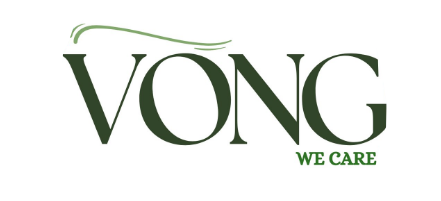Present Assets Guide: Definitions, Examples & Extra
Current liabilities are any monetary obligations an organization has that might be due within an operating cycle. In this instance, you’ll be able to see that the property and liabilities are listed in the order of their liquidity. The most liquid belongings (cash) are listed first, and the least liquid (intangible assets) are listed final.

That seems within the asset part as a adverse amount and ultimately reduces the owner’s fairness. Major tools like manufacturing machines, production tools, automobiles, computers, furnishings, and so on. Depreciation is a technique by which the expense of such belongings is matched with the revenue they generate for the company over their useful lifespan. At Financopedia, we’re dedicated to assisting small businesses and individuals with their finances and taxes. Alexander Kassulke serves as a seasoned Assigning Editor, guiding the content technique and ensuring a sturdy coverage of economic markets.
Over the service period, these expenses get reclassified as expenses in the revenue assertion, affecting internet earnings. Pay consideration to the ratios involving present belongings, such as the current ratio (current belongings divided by current liabilities), which supplies insight right into a company’s short-term monetary strength. For present asset accounts, money and money equivalents is probably the most liquid with inventories being the least liquid as a result of period of time it can take to promote stocks to clients.
However as a small enterprise proprietor, understanding primary accounting phrases might help. A common accounting time period you could come throughout is “current property.” Let’s explore what that time period means, some examples, and how to calculate them. Using the order of liquidity to present the current belongings has many benefits, not just for the readers of monetary statements but for administration of the corporate as well. The next most liquid property are short-term investments, followed by accounts receivable and Stock. Land isn’t a current asset as a result of present property are short-term, liquid and marketable economic assets that a enterprise can use or readily convert to cash within 1 12 months. Quite, land is a non-current asset, which is a long-term useful resource with a helpful lifetime of greater than 12 months.
If you want money now, cash in hand, your checking account, and your savings account are at the prime of the listing. The items final so as of liquidity are issues like real property and other belongings that can take a very long time to convert to cash. The order of liquidity in accounting is a useful tool for assessing an organization’s capacity to satisfy its short-term obligations. Stock is listed after accounts receivable, and long-term belongings are last.
Current belongings are also a method to consider a company’s danger profile, with a high quantity of current property indicating a decrease threat for the corporate. Managing funds could be advanced, from property, liabilities, and even funding portfolios. Many professionals use financial ratios to grasp and handle their financial dealings. Do Not neglect to include your prepaid bills — you’ve already made for goods or providers you may obtain sooner or later, corresponding to leased tools and insurance premiums. Subsequent, add up your accounts receivable, which is the sum of money prospects owe to your small business for items and companies they’ve obtained however haven’t paid for yet. For example, should you run a subscription-based site, the amount owed would fall underneath this class.

Marketable Securities Overview
This order is sensible, as cash is the most easily accessible and can be quickly converted into cash if wanted. The order of liquidity in accounting is an important idea that helps businesses and traders understand a company’s monetary stability. It refers to the sequence during which belongings and liabilities are placed on a steadiness sheet, from most liquid to least. These embrace inventory and bond investments that might be readily traded on public exchanges.
Quick Ratio = (cash & Money Equivalents + Short-term Investments + Accounts Receivables) ÷ Current Liabilities
They provide the lifeblood of an organization’s day by day operations, offering a clear snapshot of its liquidity and operational efficiency. Ultimately, the order of liquidity of accounts will depend on the company and the industry. In order to grasp the order of liquidity, being conversant in the meaning of liquidity is key. When speaking about liquidity of an organization, it makes reference to the capacity of a company to settle their liabilities. The order is essential as a end result of it reflects which assets you are going to use so as to pay liabilities.
- Other liquidity ratios don’t use current assets as a part of the calculation, similar to days sales outstanding or DSO.
- Buyers can acquire useful perception from this monetary assertion since it exhibits an organization’s assets and the way it’s funded to evaluate its monetary health.
- These forms of investments present a way to earn curiosity or returns on idle money whereas nonetheless accessing your funds when you need it.
- Accounts receivable embrace non-trade and trade receivables, with the latter normally making up a considerably larger portion of the whole balance displayed beneath current assets on a stability sheet.

Money and money equivalents are the most liquid current assets, as they can be accessed and transformed into money whenever needed. This includes cash readily available and short-term investments like US government treasury payments https://www.simple-accounting.org/ or certificates of deposit. Present assets are essentially the most liquid assets and are listed first on the balance sheet. This is because they may or could flip into cash inside a short time period. For occasion, accounts receivable are often collected within 30 days.
This follow is referred to as «averaging,» and involves taking the year-end (2023 and 2024) figures—let’s say for whole assets—and including them together, then dividing the total by two. This exercise gives us a tough however helpful approximation of a balance sheet quantity for the entire year 2024, which is what the income assertion number, corresponding to internet revenue, represents. In the asset sections talked about above, the accounts are listed in the descending order of their liquidity (how quickly and simply they are often transformed to cash). Equally, liabilities are listed within the order of their priority for payment. In financial reporting, the phrases «current» and «non-current» are synonymous with the phrases «short-term» and «long-term,» respectively, and are used interchangeably. A firm’s monetary statements—balance sheet, revenue, and cash flow statements—are a key source of knowledge for analyzing the funding worth of its inventory.
